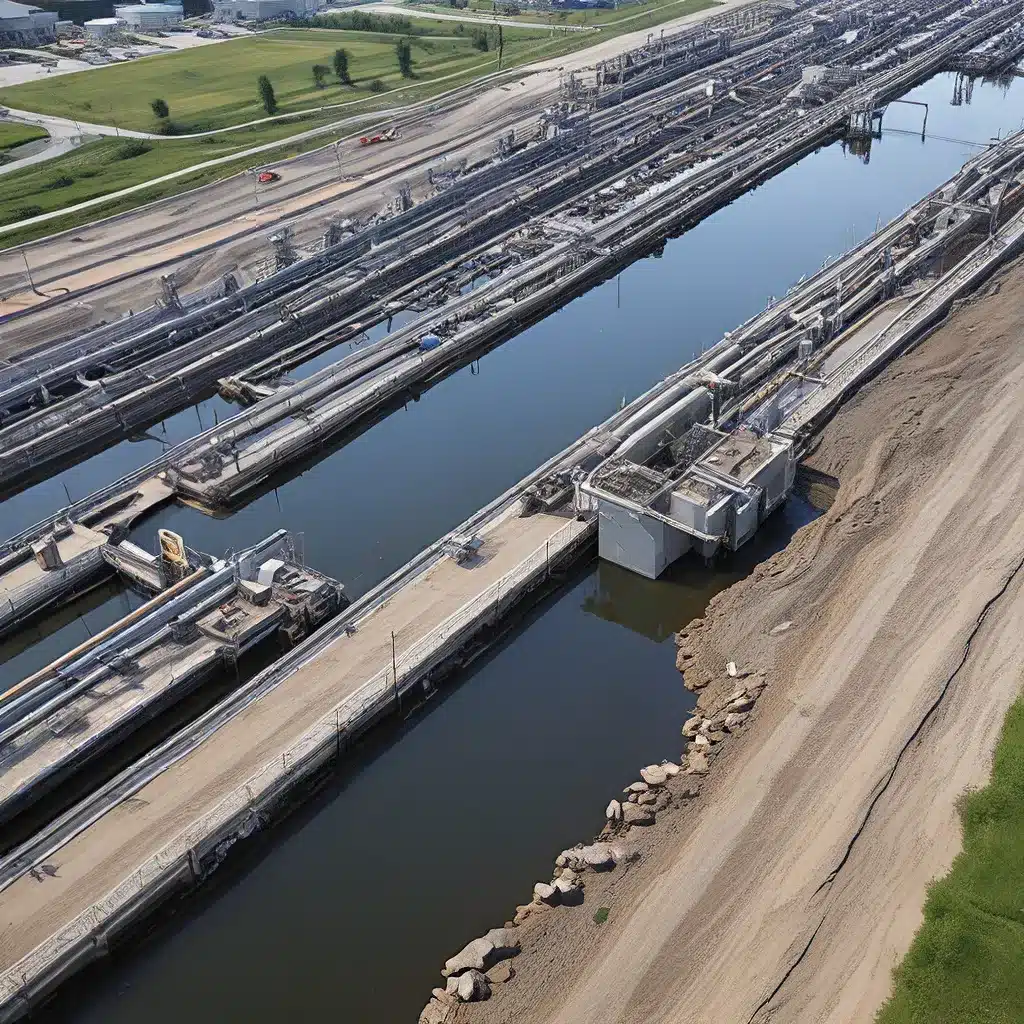
The Tidal Wave of Emerging Contaminants
As I stood knee-deep in the rushing waters of a wastewater treatment plant, the sheer complexity of the challenge before me dawned on me. Sure, I had read the reports, attended the seminars, and even earned a few grey hairs from wrestling with these emerging contaminants. But nothing could have prepared me for the overwhelming reality of it all. It was like trying to catch a tsunami with a butterfly net.
These days, it seems like a new class of compounds is discovered almost weekly – from per- and polyfluoroalkyl substances (PFAS) to pharmaceuticals, microplastics, and God knows what else. And the kicker? They’re not just showing up in our waterways; they’re infiltrating our very lives, seeping into the fabric of our communities, our bodies, and our futures.
As the team at GHD has noted, these emerging contaminants are ubiquitous and toxic, posing a growing threat to both the environment and public health. But the real challenge lies in the complexity of addressing them. It’s like trying to navigate a maze blindfolded, with no map and a million potential dead ends.
Uncharted Waters: The PFAS Conundrum
Take PFAS, for example. These “forever chemicals” have become a thorn in the side of water treatment professionals across the country. On April 10, 2024, the EPA promulgated the Final PFAS National Primary Drinking Water Regulations Rule, which set limits on six PFAS compounds. And let me tell you, the implications of this new rule are nothing short of seismic.
Suddenly, water utilities are scrambling to understand the extent of PFAS contamination in their systems, and they’re turning to experts like myself for guidance. As the team at GHD has mentioned, we’ve been assisting water utilities across the US for years, helping them prepare for this moment. But the truth is, even with all our expertise, we’re still navigating uncharted waters.
The sheer number of PFAS compounds out there, the complex chemistry, and the variability in water quality and treatment processes make this a moving target. It’s like chasing a ghost, constantly shifting and changing, evading our best efforts to contain it.
Capturing the Elusive: PFAS Treatment Technologies
When it comes to PFAS treatment, the options are as diverse as the compounds themselves. As GHD has noted, the technologies can be broadly grouped into two categories: PFAS capture and PFAS destruction. But the real challenge lies in determining which one is the best fit for a particular facility.
It’s like a high-stakes game of Tetris, trying to find the perfect piece to fit the unique puzzle of each water treatment plant. Factors like water quality, the presence of co-contaminants, pH, and total organic carbon can all play a role in the efficacy of these technologies. And let’s not forget the ever-changing landscape of the PFAS treatment market, where new solutions are emerging faster than we can keep up.
That’s where my team and I come in. We’ve got the in-depth PFAS capability to cut through the noise, analyze the options, and help water utilities make well-informed decisions. It’s a delicate dance, balancing compliance, cost-effectiveness, and the ever-changing science.
Staying Ahead of the Curve: The Future of Emerging Contaminants
But PFAS is just the tip of the iceberg. As Newterra has pointed out, the world of water and wastewater treatment is becoming increasingly complex, with a growing array of emerging contaminants and ever-evolving regulations.
Pharmaceuticals, microplastics, and a host of other compounds are now finding their way into our water sources, posing new challenges and risks. And the reality is, we’re often playing catch-up, scrambling to develop effective treatment strategies as these contaminants emerge.
That’s why it’s more important than ever for water treatment professionals like myself to stay ahead of the curve. We need to be proactive, constantly scanning the horizon for the next wave of emerging threats, and developing the tools and expertise to tackle them head-on.
A Collaborative Approach to Sustainable Solutions
But we can’t do it alone. As GHD has emphasized, this is a collaborative effort, where we stand shoulder-to-shoulder with our clients, committed to making water, energy, and communities sustainable for generations to come.
It’s about embracing diversity, drawing on a wealth of perspectives and experiences to develop imaginative and responsive solutions. It’s about building a culture of trust and belonging, where we can all thrive and work together towards a common goal.
And it’s about constantly pushing the boundaries of what’s possible, harnessing the power of innovation and technology to tackle these complex challenges. Because let’s face it, the stakes have never been higher. The health of our communities, the vitality of our ecosystems, and the very future of our planet are all on the line.
Weathering the Storm: Resilience in the Face of Uncertainty
So, as I stand here, knee-deep in the churning waters of a wastewater treatment plant, I can’t help but feel a sense of both trepidation and determination. The challenges we face are daunting, the uncertainties overwhelming. But I also know that with the right mindset, the right team, and the right approach, we can weather this storm.
It’s about being nimble, adaptable, and always ready to pivot. It’s about embracing the complexities, acknowledging the limits of our knowledge, and remaining open to new perspectives and emerging solutions. And it’s about building resilience, not just in our water treatment systems, but in our communities, our organizations, and ourselves.
Because at the end of the day, this isn’t just about water. It’s about the very fabric of our lives, the foundations of our society, and the legacy we leave for future generations. And that’s a responsibility I’m more than willing to shoulder, one step at a time, one challenge at a time.
So, let’s dive in, shall we? The future of our water, our communities, and our world is waiting.


